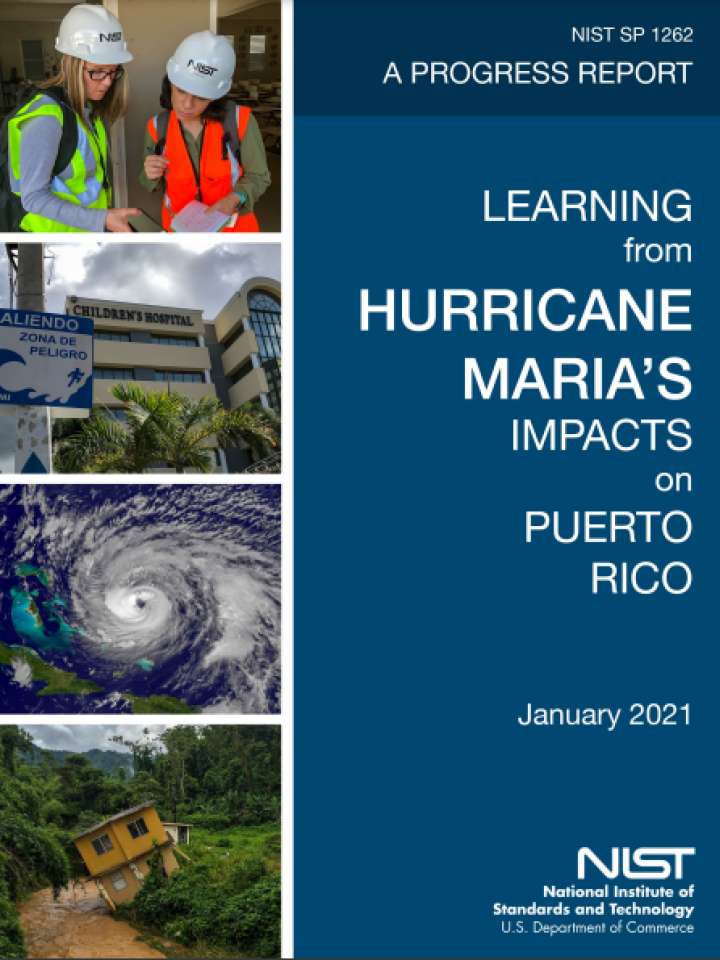Learning from Hurricane Maria’s impacts on Puerto Rico: a progress report
This report explains in detail the rationale for launching the multi-year effort to study how critical buildings performed during the 2017 Hurricane Maria, as well as how emergency communications systems worked beside the summary of progress to date. On September 20, 2017, Hurricane Maria had a devastating impact on much of Puerto Rico, damaging buildings that its communities relied upon for medical care, safety, communications, education, business, and more. To better understand how the buildings and infrastructure failed, and how we can prevent such failures in the future, in 2018, the National Institute of Standards and Technology (NIST) launched a multi-year effort to study how critical buildings performed during the storm, as well as how emergency communications systems worked. The NIST Hurricane Maria Program is investigating (1) the wind environment and technical conditions associated with deaths and injuries, (2) the performance of representative critical buildings, and designated safe areas in those buildings, including their dependence on lifelines, and (3) the performance of emergency communications systems and the public's response to such communications.
These correspond to the three goals of a technical investigation under the National Construction Safety Team Act (NCST Act). Under the National Windstorm Impact Reduction Program (NWIRP), authorized by the National Windstorm Impact Reduction Act, NIST is also conducting a research study on the impacts to and recovery of (1) businesses and supply chains, (2) education and healthcare services, and (3) infrastructure systems that support the functioning of critical buildings and emergency communications. As complementary components of the NIST Hurricane Maria Program, the NCST technical investigation and the NWIRP research study are closely coordinated. This report explains in detail the rationale for launching this effort, the specific areas selected for investigation and study by an interdisciplinary Team, and the approach that NIST is using, which includes building upon information gathered by others, but also conducting extensive original data collection and analyses. The report also summarizes progress to date.
